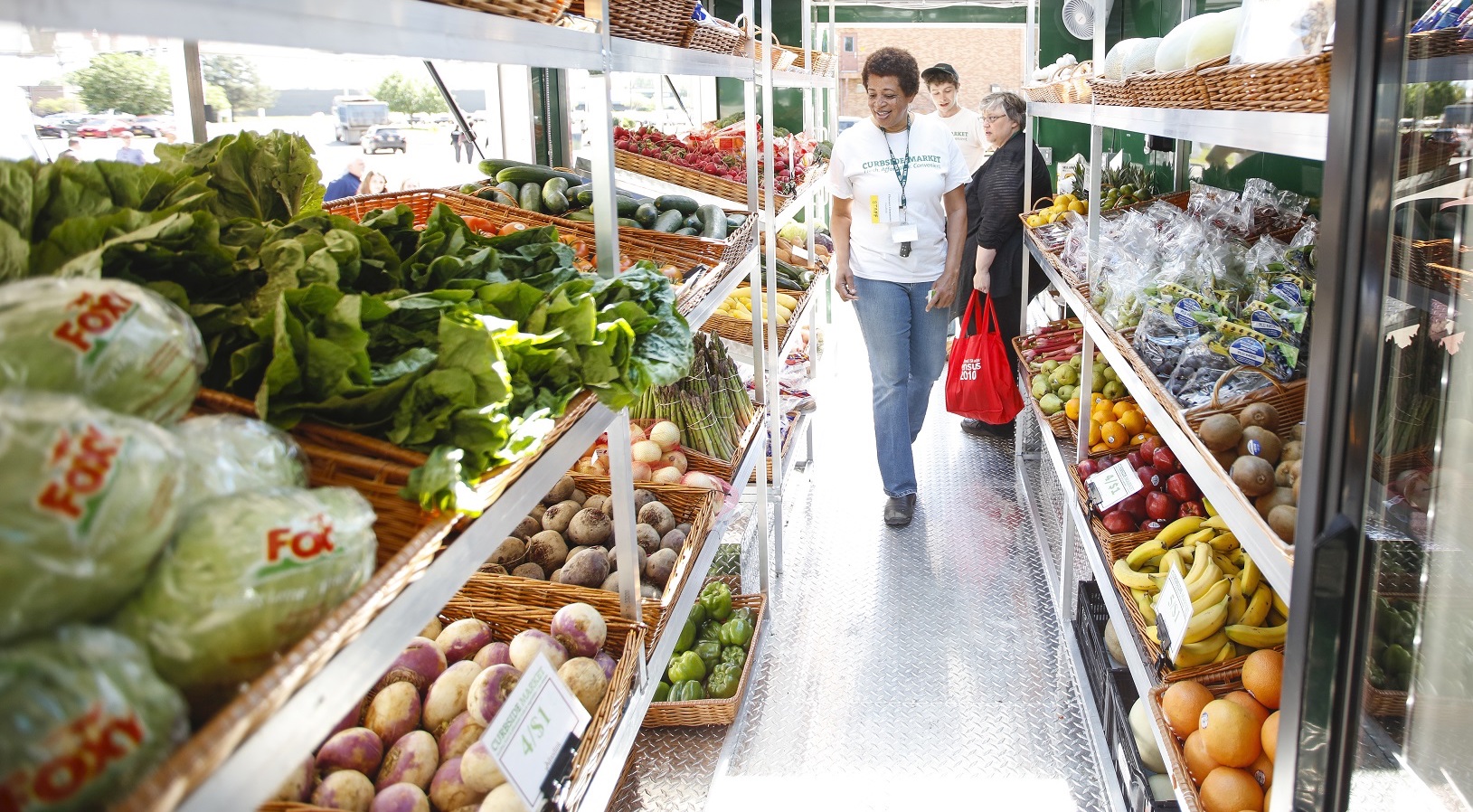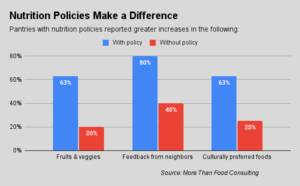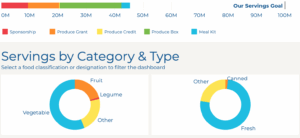Foodlink’s Curbside Market looks like a typical mobile pantry, but it’s actually so much more.
Besides improving access to fruits and vegetables in low-income neighborhoods, Curbside Market is prepping to become the nation’s first mobile provider of WIC staples. Plus, it’s advancing a new model for fruit and vegetable prescriptions, and is behind Foodlink’s new home-delivery program to isolated households in rural areas.
The keen focus on health makes Curbside Market more like a mobile public health unit, in keeping with the growing acknowledgement that what people eat has as much to do with their well-being as the medical care they receive. Like many food banks, Foodlink is taking a closer look at the enormous impact it has on societal health by way of the food it distributes, and holding itself accountable for that.

“We’re moving closer to the idea that we’re a public health organization.” said Julia Tedesco, President and CEO of Rochester, NY-based Foodlink.
Curbside Market has steadily broadened its focus since beginning in 2013 as a way to improve access to healthy food by bringing fruits and veggies directly into low-income communities. In recent years, a New York State effort to reduce avoidable hospital stays, backed by a multi-billion dollar fund, has been a key pillar of support in Foodlink’s efforts to use Curbside Market as a proving ground for public-health innovation.
“Curbside Market has increasingly become the most nimble tool we have to pilot some of our public health work,” Tedesco said.
Set to begin this summer is an effort to break down the many barriers clients face using WIC, the federal nutrition program for women, infants and children. Compared to SNAP, WIC imposes much stricter requirements on the types of food that can be bought, sometimes causing people to be denied purchases at the check-out. Meanwhile, stores have a hard time keeping up with the specific types of food they are required to stock, making it difficult to find places to redeem WIC benefits in the first place.
A mobile unit stocked specifically with WIC food would solve both those issues, though Foodlink is still sorting out logistical issues. Currently, Curbside Market vehicles return to the warehouse once a day to restock their fruits and vegetables. As full-service stores offering dairy, proteins and whole grains in addition to fruits and veggies, the mobile WIC units would likely have to restock much more frequently. Plus, a seemingly unnecessary bureaucratic ruling dictates that the electronic cards used to make WIC purchases cannot be processed on a wireless device, as Curbside Market uses for SNAP purchases. “We have to figure out how not to be wireless on those trucks,” Tedesco noted.

Curbside Market is also pioneering a fruit and vegetable prescription program (FVRx) that addresses potential shortcomings of more traditional approaches. Importantly, the prescription program is designed for individuals who have already been assigned a care manager by the health-care facility because of a chronic illness. Those care managers are tasked with writing the FVRx prescription, eliminating the need for patients to go through a separate screening for food insecurity.
In addition, because the Curbside Markets show up at the health-care facilities on a regular basis, there is no need for the hospital to house, staff or stock its own on-site pantry. And patients (who are given $30 monthly to spend on fruits and veggies) can take care of their food needs at the time of their appointments if they wish. “We’ve made it as painless as possible,” Tedesco said.
With more than 200 people enrolled, the FVRx program has reached a redemption rate of about 35%, according to Camille Verbofsky, Community Health Research Specialist at Foodlink. Redemption rates, however, were found to be much higher in urban settings, likely because of the lack of access to fresh food in rural areas. So Curbside Market reached out to rural patients with FVRx and discovered they would be thrilled to receive home deliveries. So far, Curbside Market has made two deliveries each to 15 rural households to “rave reviews,” Tedesco said, adding, “This goes outside the scope of our normal work.”
[FoodlinkNY is like a growing number of food banks that are addressing needs in the community through home delivery. Similarly, Greater Chicago Food Depository is building a massive kitchen to support the delivery of prepared meals, and Buffalo-based FeedMore WNY recently merged with the local Meals on Wheels program to strengthen home deliveries.]
Even as it innovates, Curbside Market continues to serve its original purpose as a mobile farmer’s market, traveling six days a week to about 90 stops during the peak growing season and about 70 in the winter. In a departure from Foodlink’s mobile pantries that distribute food for free, Curbside Market customers pay for their low-cost produce (with SNAP, cash, credit or a produce-purchase incentive program), in an intentional effort to give them agency and provide some sustainability for the program.
“There’s a foundational belief that emergency food distribution does not end hunger,” Tedesco said. “The goal of Curbside Market is to give people access to food they choose to spend their dollars on.”
While the mobile pantries serve donated or rescued perishable food, Curbside Market serves only produce that Foodlink has purchased. Foodlink’s goal is to break even on Curbside Market; so far it’s covering the cost of the product, but not staffing.
Foodlink plans to continue pushing forward, taking advantage of Curbside Market’s agility and flexibility. “Part of our success is that we have not placed limits on what we’re willing to do in terms of creating access,” Tedesco said.













